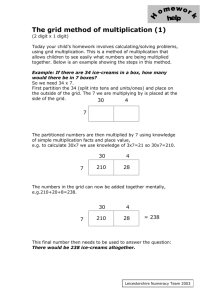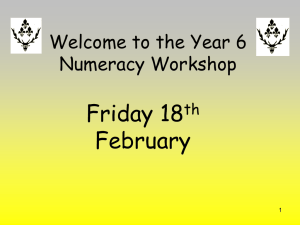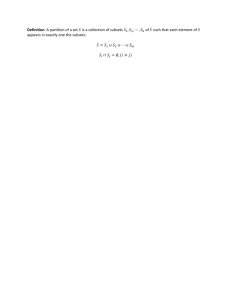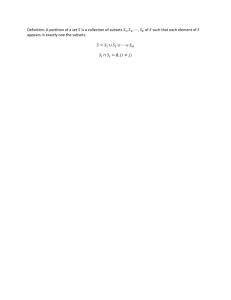Progression in Written Multiplication 2014 new NC summary111 (1)
advertisement
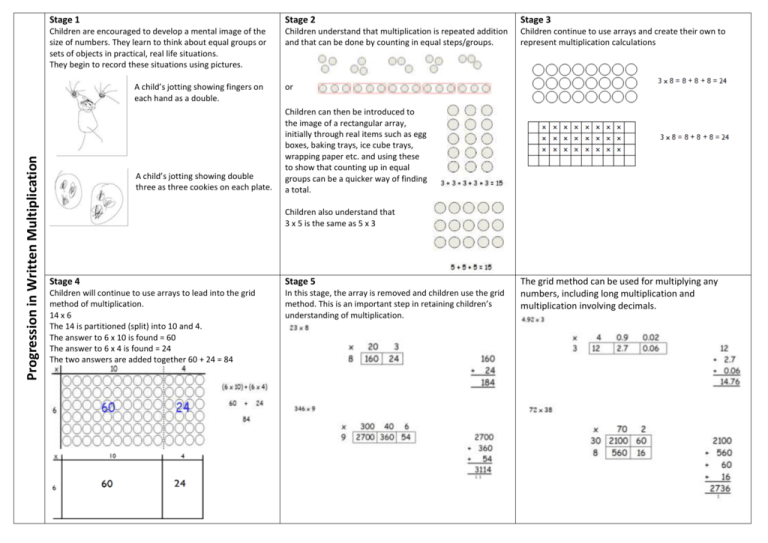
Stage 1 Stage 2 Stage 3 Children are encouraged to develop a mental image of the size of numbers. They learn to think about equal groups or sets of objects in practical, real life situations. They begin to record these situations using pictures. Children understand that multiplication is repeated addition and that can be done by counting in equal steps/groups. Children continue to use arrays and create their own to represent multiplication calculations Progression in Written Multiplication A child’s jotting showing fingers on each hand as a double. A child’s jotting showing double three as three cookies on each plate. or Children can then be introduced to the image of a rectangular array, initially through real items such as egg boxes, baking trays, ice cube trays, wrapping paper etc. and using these to show that counting up in equal groups can be a quicker way of finding a total. Children also understand that 3 x 5 is the same as 5 x 3 Stage 4 Stage 5 Children will continue to use arrays to lead into the grid method of multiplication. 14 x 6 The 14 is partitioned (split) into 10 and 4. The answer to 6 x 10 is found = 60 The answer to 6 x 4 is found = 24 The two answers are added together 60 + 24 = 84 In this stage, the array is removed and children use the grid method. This is an important step in retaining children’s understanding of multiplication. The grid method can be used for multiplying any numbers, including long multiplication and multiplication involving decimals. Progression in Written Multiplication Stage 6 The grid method should then be taken into an expanded vertical layout. Stage 7 The expanded method should then be taken into the compact vertical method. The place value columns are still labelled to ensure children understand the value of each digit in the original number and the answer. Stage 8 The vertical method for long multiplication builds on children being efficient when using grid method. Mental addition of the top and bottom rows separately will help children identify these answers in the vertical method. Again the place value columns are labelled to support children in understanding the value of the digits in the original numbers and in the answer. Children should not be made to go onto the next stage if: 1) 2) they are not ready. they are not confident. Children should be encouraged to consider if a mental calculation would be appropriate before using written methods. As with other calculations, start with the least significant digit, which means we are doing the equivalent of the bottom row of the grid method from right to left. Carried digits are crossed out to avoid confusion as the method continues. The next step is multiplying by the multiple of 10. This is equivalent to the top row of the grid method. Therefore, if the answer has 2 digits, this is simply put in the correct place. Whereas if the answer has 3 digits, the TU digits are put into the answer and the H digit is carried into this column. The final step is to add the two answers together.

